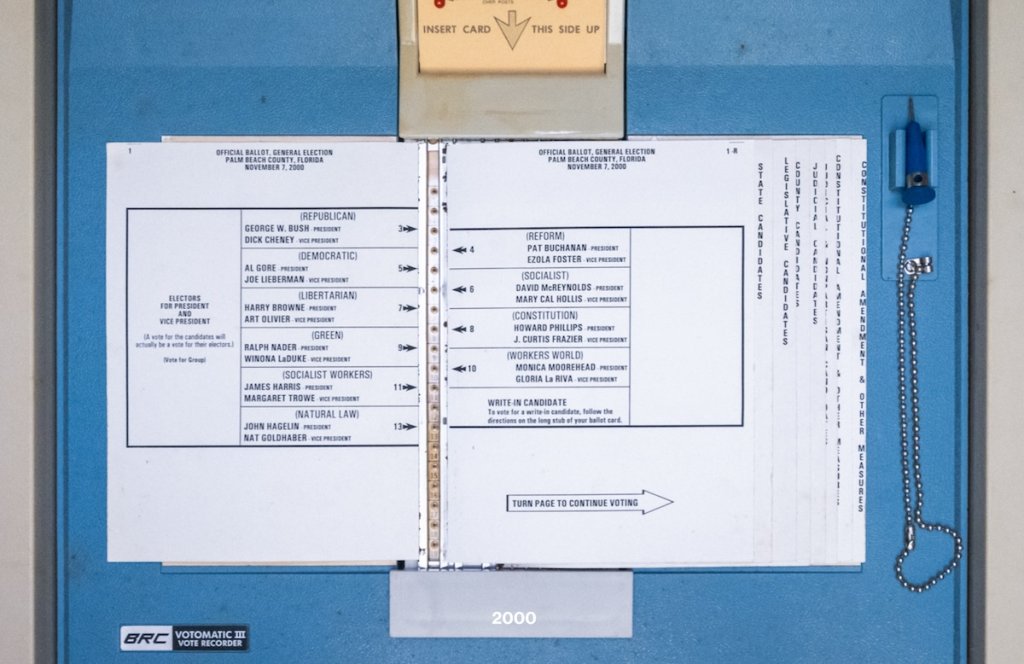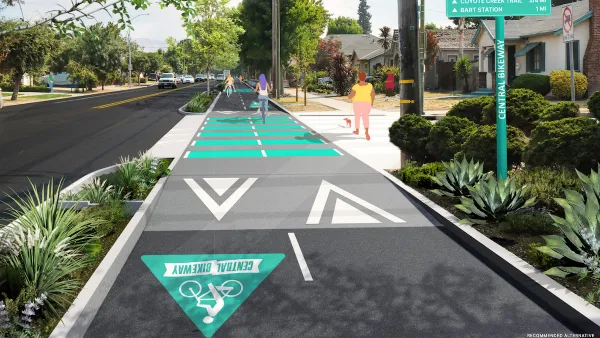Often an afterthought, graphic design impacts everything from how we navigate a city to how we feel about it. One designer argues: the people deserve better.

Great public sector graphic design has had a lasting impact. Take the recent redesign of New York’s iconically maximalist 1979 subway map, which was famously created after riders were confused by the original minimalist version created by legendary designer Massimo Vignelli. The new map, introduced this spring, embraces Vignelli's minimalist philosophy while still retaining a user-friendly approach. But public sector design success stories like these are too often the exception, not the rule.
Instead, if you were to ask community members what they think of government or public sector design — a city logo, public transit signage, maps, websites and more – they’d probably say it’s typically “boring”, “basic” or “ineffective.” And for good reason.
Take the historically bad design of Florida’s “butterfly ballot” from the 2000 national election, for example. At best, it caused confusion and at worst unintended selections for many voters during one of the nation’s closest elections in history. Then there is the poorly structured IRS tax forms, which has been listed as a contributing factor to the hundreds of billions in lost annual federal tax revenue. Online, satisfaction with digital federal services in the U.S. typically remains low – with users citing that few websites are well-designed, mobile-friendly, or accessible for people with disabilities, despite laws and a seldom-used official design system meant to correct the problem.

Even in smaller municipalities, design is often overlooked. When creating a logo for their community, many suburbs rehash the same, tired script typefaces, which contributes to the spirit of sameness that studies suggest can erode a sense of community and hinder potential economic growth.
But there’s no rule that good, thoughtful communication design needs to be sacrificed in the process of working in the public sector. In fact, good design should be the norm, considering aspects like typography, color, hierarchy, and editorial decisions as critical tools towards unlocking authenticity, clarity, and resonance of messaging — much more than “aesthetics.” Most importantly for the public sector, great design should provide utility, aid in strengthening communities and enable access to necessary service.
Take New York, which owes a lot of its modern success and perceptions to the strength of its ubiquitous I heart NY brand. The NASA logo by James Modarelli and Steff Geissbühler’s EPA logo both represent a clear concept with clean lines and simple, bold imagery. This is probably why it has remained relatively unchanged across ten administrations.
When creating a planning document or strategic vision, design often has to communicate critical issues to skeptical constituents. Our own work for Chicago’s Regional Transit Authority had to present both the agency’s vision for a revitalized public transit system and convey an enormous number of facts and figures in a way that could be easily understood by the general public. It’s currently at the center of the debate around transit funding in Chicago. All these projects use design to address critical civic challenges, treating the presentation of information and identity as central to shaping content and community — much more than “just style.”

Designing a better process
So how can we make good design more present within the public sector? Part of improving things is fixing the system that too often produces these poor results. While it’s untrue that the system is broken and that the people working within it are both lazy and corrupt — a common misperception — its processes do have room for improvement.
Government contracts can take hours to respond to, have hyper-specific submittal requirements, and then take months to be awarded. They also can be unclear, since they are usually written by procurement departments and not necessarily by those in communications.
While this rigorous oversight is understandable for multi-billion dollar infrastructure contracts, it seems silly to make simple communication efforts — at a miniscule fraction of the budget — have to conform to the same requirements.
Those in the public sector want to make things better and are hungry for new ideas. Creative designers can be an aid, helping communicate how good government is essential to communities and constituents, and is making their lives better every day. Together, we must commit to taking concrete steps to make sure thoughtful design is prioritized at every level. Here are some simple changes that can help move things in the right direction.
- Make bid requests easier to respond to: The bidding process can make it challenging for smaller, more cost-effective studios to participate. Most government proposals that I have responded to are incredibly complex, with dozens of required forms that require up to 80 hours in some cases to respond to. This can be nearly impossible for smaller studios with limited resources to navigate, despite both their strong capabilities and smart ideas. The public sector should streamline and “right-size” their application processes for smaller budgets so that studios of all sizes are encouraged to apply.
- Think strategic, not just creative: The public sector is famously bureaucratic, with layers of stakeholder approvals to navigate. That’s why organizations should partner with designers who know how to present a strong, creative concept that is strategically sound and clearly understood. By striking a balance between an outside-the-box idea and a soulless one the project concept has the best chance of making it to the finish line.
- Urge patience and active listening: Designers are typically excited to immediately dream up creative solutions and present them to their clients. But we’ve found that a more successful process is to slow down, listen, and learn what’s most important. Community engagement can be critical to securing buy-in to creative approaches. Patience and persistence are also important throughout multiple reviews and extended deadlines. It’s important to be deliberate and open throughout the design process so you can maintain momentum throughout the project.
The beauty of working on public sector projects is that you’re designing for communities – sometimes even the community in which you live. Great design in these areas really matters, so it’s worth building a better process to make sure that we all get it right the first time.
John Pobojewski is a partner and design director at Span — a studio crossing the boundaries of communication design in all mediums. Blending typographic discipline with fearless expression, Span elevates the role of the visual message in both culture and community.

Planetizen Federal Action Tracker
A weekly monitor of how Trump’s orders and actions are impacting planners and planning in America.

Silicon Valley ‘Bike Superhighway’ Awarded $14M State Grant
A Caltrans grant brings the 10-mile Central Bikeway project connecting Santa Clara and East San Jose closer to fruition.

Amtrak Cutting Jobs, Funding to High-Speed Rail
The agency plans to cut 10 percent of its workforce and has confirmed it will not fund new high-speed rail projects.

California Set to Increase Electric Truck Chargers by 25%
The California Transportation Commission approved funding for an additional 500 charging ports for electric trucks along some of the state’s busiest freight corridors.

21 Climate Resilience Projects Cancelled by the EPA
The federal government has pulled funding for at least 21 projects related to farming, food systems, and environmental justice to comply with one of Trump’s early executive orders.

Trump Executive Order on Homelessness Calls for Forced Institutionalization
The order seeks to remove legal precedents and consent decrees that prevent cities from moving unhoused people from the street to treatment centers.
Urban Design for Planners 1: Software Tools
This six-course series explores essential urban design concepts using open source software and equips planners with the tools they need to participate fully in the urban design process.
Planning for Universal Design
Learn the tools for implementing Universal Design in planning regulations.
Yukon Government
Caltrans
New Jersey Institute of Technology
Mpact (founded as Rail~Volution)
City of Camden Redevelopment Agency
City of Norman, Oklahoma
City of Portland
City of Laramie





























